Many shipyards build sections, but very few build blocks.
Our facilities comprise over 100 cranes and shipbuilding halls, the most famous is our blue crane in Kiel, Germany, with a lifting capacity of 900 tonnes. We build complex, highly-integrated naval and large, non-military vessels for our clients and customers in a sophisticated pre-assembled block method.
At the beginning of every ship are the specifications of our client’s wishes and specific requirements. For this aim, our experienced engineers work with our key partners to develop the best technical solutions possible. For this, we involve all relevant departments. Besides the basic design theory draft, these include steel construction, mechanical engineering, electrical engineering, fitting and furnishing.
The detailed design draft is executed in a complex 3D model, creating the basis for the realisation planning and the subsequent production. During the process, you as the customer will be involved in close coordination. Our goal: a tailor-made ship that meets your requirements.
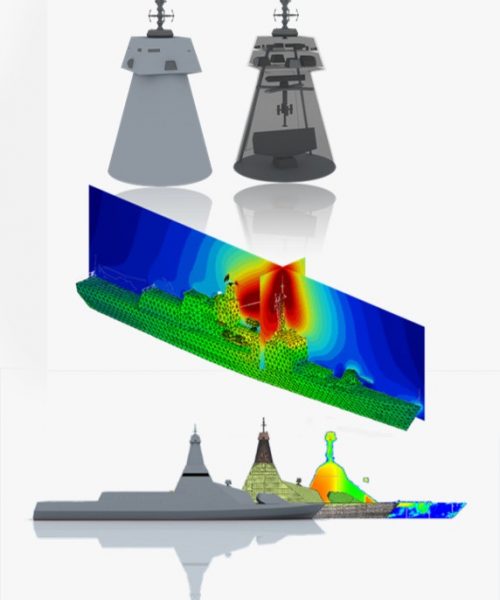
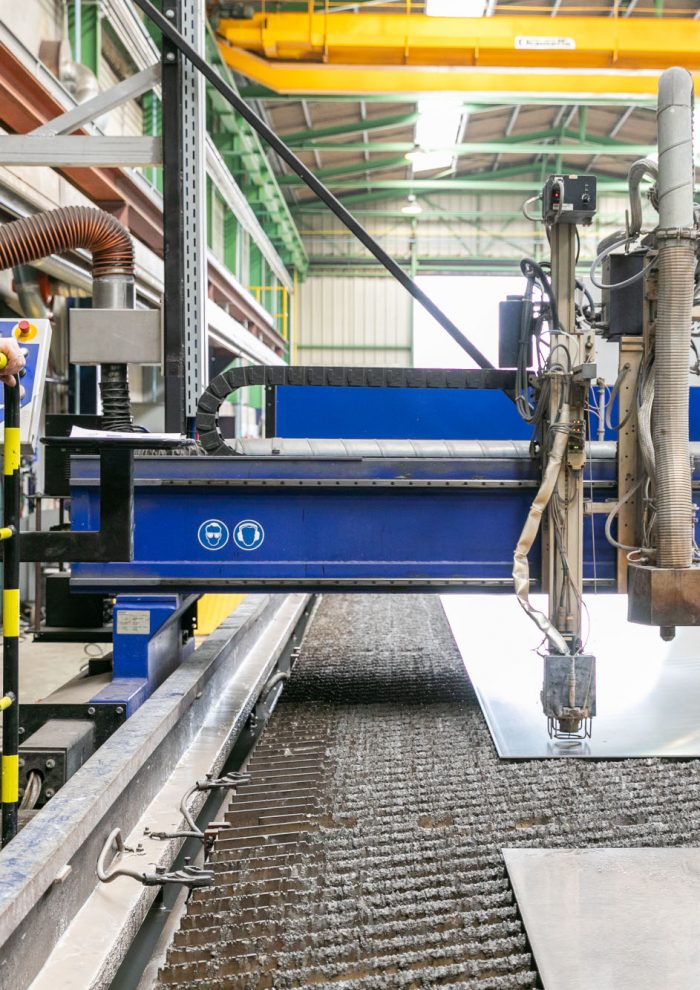
The beginning of the steel-cutting process is always an extraordinary moment for every customer and our employees. When our plasma cutting equipment slices the first component out of a sheet of steel, the realisation process finally begins.
The first of up to 350,000 individual parts and components a ship can comprise are produced in our build halls.
Our specialists in the construction department create numerical data that control the cutting procedure. These contain the information for cutting the openings of pipes, ducts, cables and hatches and are essential for providing the necessary structural rigidity. Our section robots cut and label flat bars, bulb flats and angle bars.
ll individual components are taken for further processing in the building halls, which are made into assemblies, sub-assemblies and substructures. These processes all follow the principles of our construction methodology. In the next step, we label and sort the various units produced in this process stage, enabling us to guarantee an ideal flow of materials.
Flat elements are essential for constructing a vessel’s decks and hull and may be as large as 16 m x 18 m. Minimal transportation distances from process to process guarantee an efficient workflow. A decisive factor in this is the rail transport system with several magnetic cranes connecting the Sheds with the external storage facility for sheet steel.
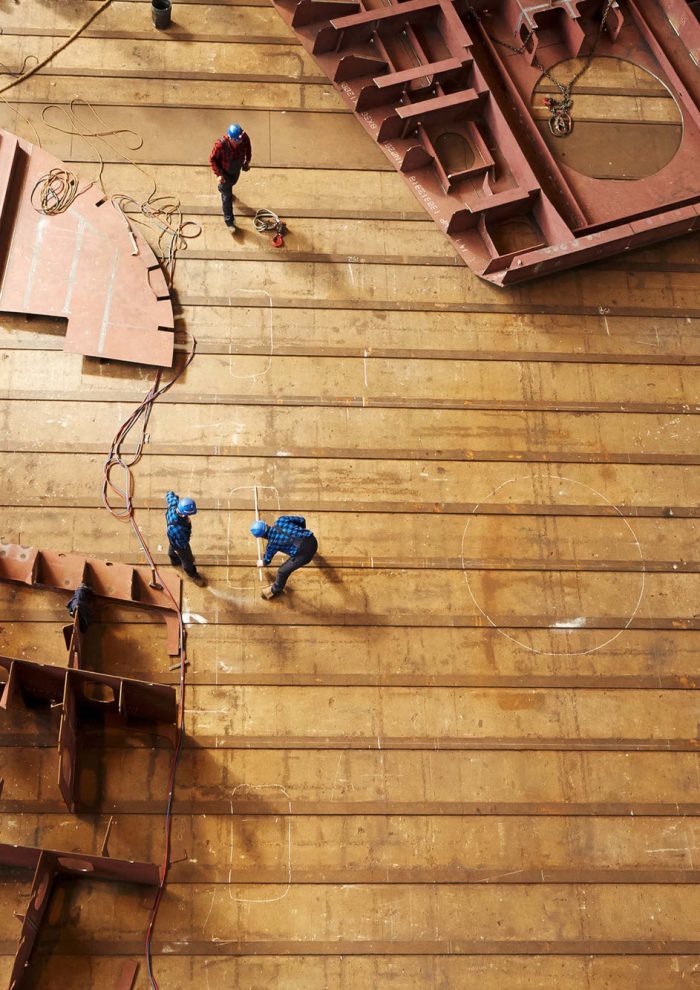
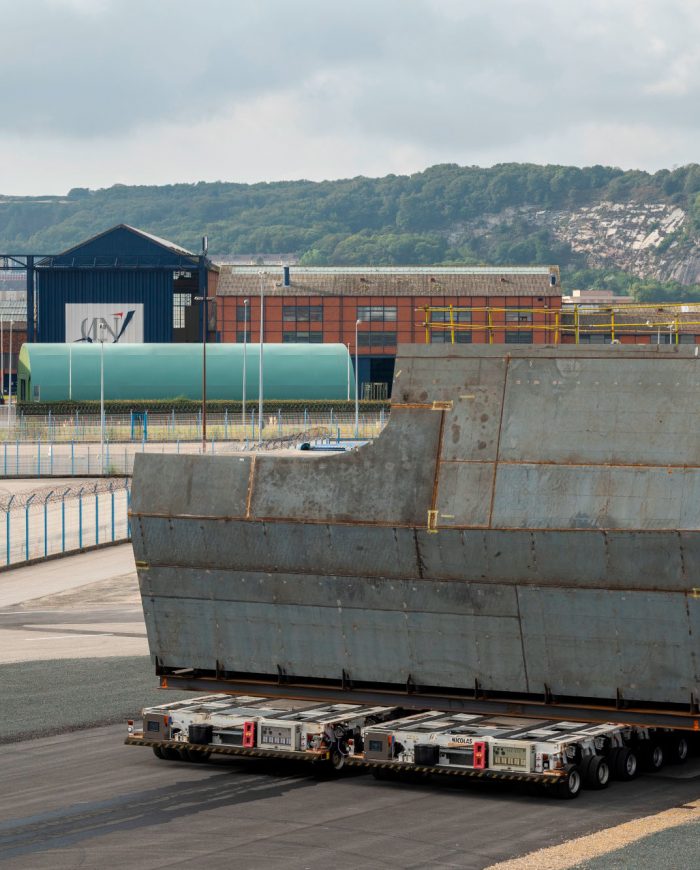
Our heavy transport vehicles and cranes move the elements to the shipbuilding halls. A rail system can open the roofs of the halls to allow the precise use of the 900 t portal crane.
In the shipbuilding halls, we construct sections, blocks and large-sized blocks on a working area of 5400 m² in each hall. Most of the welding works are in section and large block production.
Here, we work inside the buildings. There we install and weld doors, ladders, pipe sleeves, and other fixtures and fittings. Our large-size block construction ensures efficient and cost-effective shipbuilding processes due to the relocation of many phases of our work from the dock to the shipbuilding halls. This means we have a high level of prefabrication and pre-fitting of equipment and systems and much shorter turnaround times in the dock.
This is how we achieve the highest quality standards.
We now transport our large-size blocks to the paint sheds. These are where the steel is surface-coated under strict observance of the most stringent environmental standards. The three paint sheds in our yard can be individually temperature and humidity controlled to create the best conditions for applying state-of-the-art, high-tech coatings.
With this process, we guarantee the required protection against corrosion and limit the growth of mussels and fouling with other marine organisms. The special surface coating also contributes to a reduction of drag, resulting in significantly lower fuel consumption and higher speeds.
Strict quality assurance measures accompany all our processes. Specially trained personnel perform regular checks and analyses to ensure that our clients and customers can always rely on absolute quality.
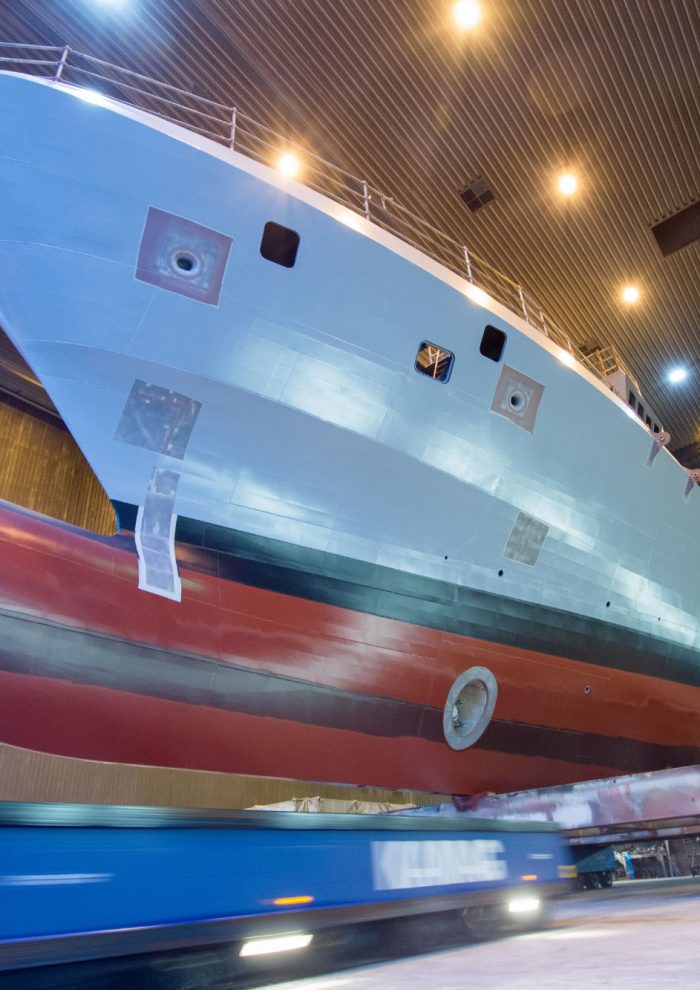
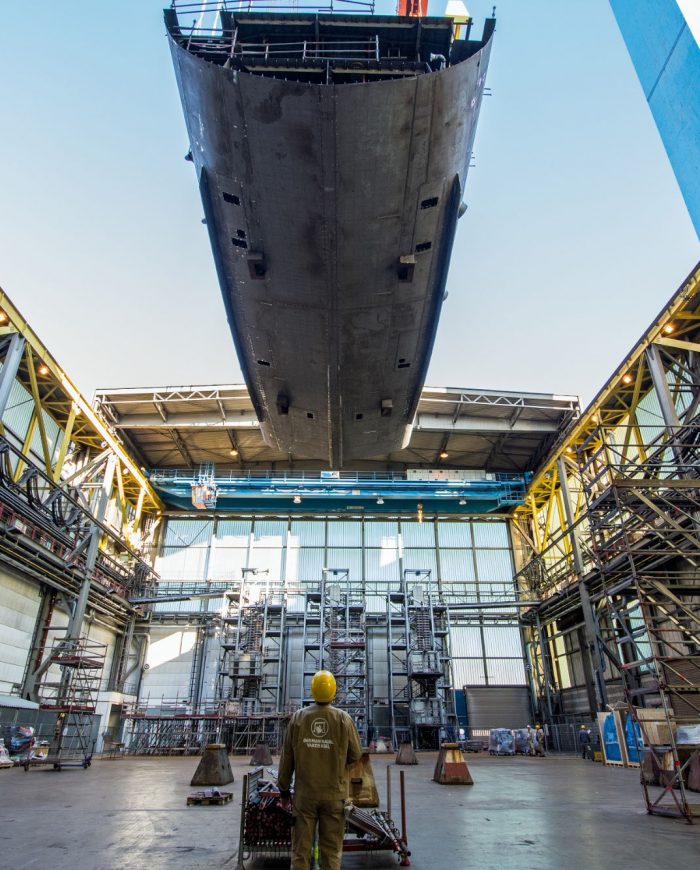
We transport the coated sections to the portal crane on shipyard transporters especially designed for heavy loads. The crane hoists them into one of our sheds with central temperature and humidity control. This is where more fittings, equipment and systems are pre-installed. The distances to the neighbouring workshops and storage facilities are short, which minimises the time and effort required for tasks on board.
Central pre-outfitting comprises, for example:
At the end of this phase, the portal crane hoists the pre-outfitted sections out of the shed through the sliding roof and lowers them to the dock.
The dock is where the mounting begins. Piece by piece, we assemble the vessel of 5 to 7 blocks in one of our mega-docks. Thanks to our powerful portal crane, this type of building is very effective. Spanning 157 m, it can reach all the relevant halls and docks of our yard.
We complete the remaining welding and coating jobs. After this, we close the hull and begin the final outfitting phase.
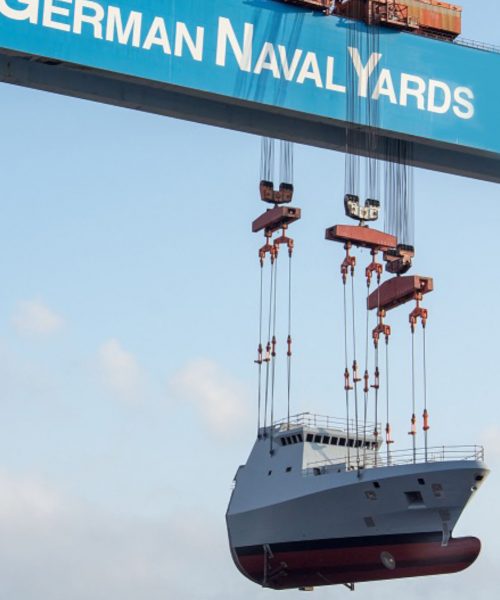
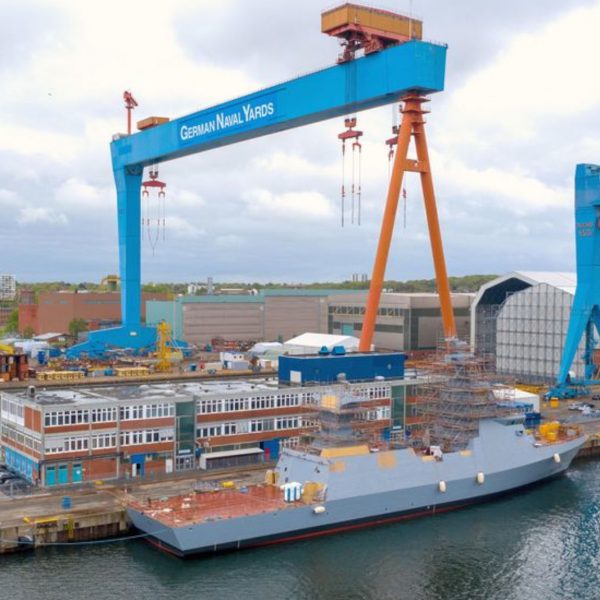
Before commissioning can begin, we have to flood the dry dock, our largest dock holds 397 million litres of water. This takes only four hours, thanks to an underground pipeline that pumps 99 million litres of water from the Kieler Förde into our dock per hour. The different trades carry out final testing at the pier, such as harbour and sea acceptance tests. We are now ready to hand over your vessel. The new building is completed. But we hope we will meet again. Many vessels we built to return to our yards for maintenance or refit.
And finally, we know every screw!